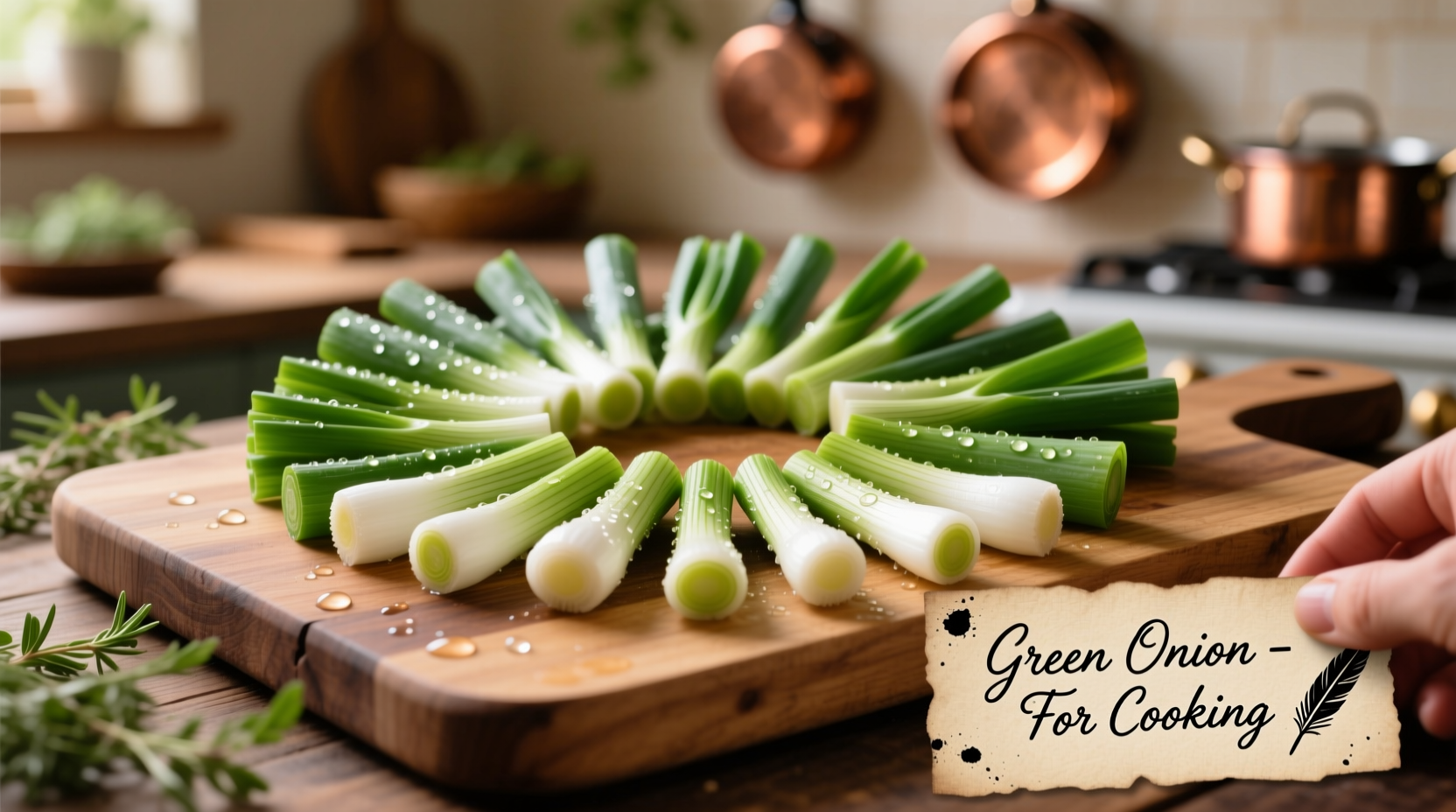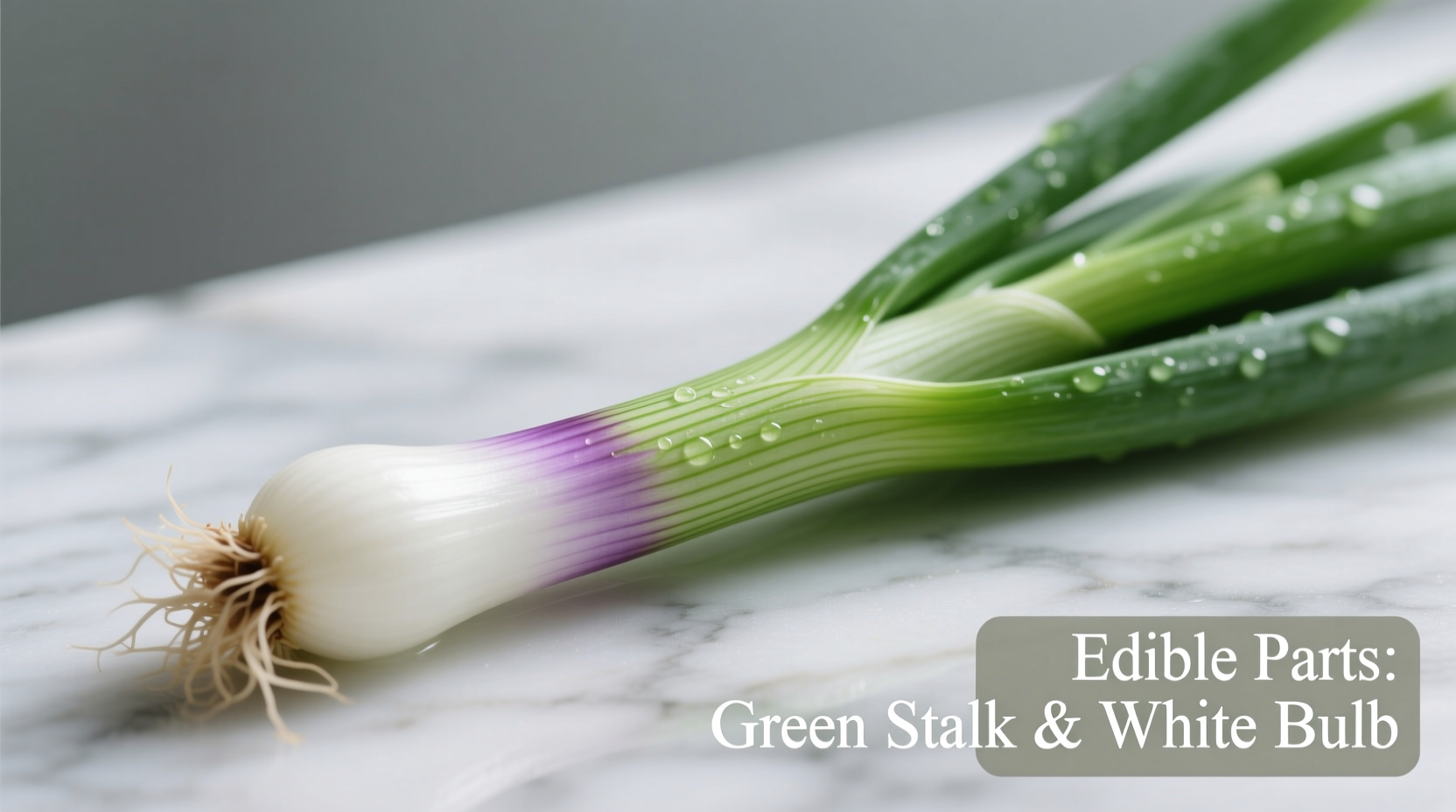Stop wasting half your green onions! Most home cooks instinctively discard the dark green tops, unaware they're throwing away valuable flavor and nutrients. Understanding how to maximize every part of this kitchen staple transforms ordinary dishes into restaurant-quality creations while reducing food waste.
Green Onion Anatomy: What You're Really Working With
Green onions (Allium fistulosum), also called scallions, consist of three distinct sections that chefs strategically utilize:
- White bulb and root end - The bottom 1-2 inches with fibrous roots (roots trimmed before eating)
- Light green transition zone - Where white fades to green, offering balanced flavor intensity
- Dark green tops - Hollow, tubular sections with subtle onion flavor
Unlike mature onions where only the bulb is edible, green onions maintain tenderness throughout their growth cycle, making nearly all parts kitchen-ready.

Practical Guide to Using Each Green Onion Part
White and Light Green Sections: Flavor Powerhouses
These sections contain higher concentrations of sulfur compounds, delivering that characteristic onion "bite" perfect for building flavor foundations. Professional chefs consistently use these parts when:
- Sautéing aromatics for stir-fries and soups
- Creating compound butters and flavored oils
- Adding crunch to salads and slaws
- Infusing broths and stocks
For optimal flavor release, chop these sections finely and allow them to rest for 5-10 minutes before cooking. This activates enzymatic reactions that develop more complex flavors.
Dark Green Tops: The Underrated Garnish
Many home cooks discard these vibrant sections, missing out on their culinary potential. The dark greens offer:
- Milder flavor that won't overpower delicate dishes
- Striking visual contrast as finishing touches
- Higher chlorophyll content with additional nutrients
- Excellent texture for adding freshness at the end
Save time by storing trimmed dark green sections in water on your counter—they'll stay crisp for days while regrowing slightly. When ready to use, slice thinly on a diagonal for elegant presentation.
Nutritional Comparison: Maximizing Health Benefits
| Green Onion Part | Vitamin K (mcg) | Vitamin C (mg) | Antioxidant Activity |
|---|---|---|---|
| White bulb | 20.7 | 18.8 | Moderate |
| Light green | 25.3 | 21.4 | High |
| Dark green | 32.9 | 27.6 | Very High |
According to USDA FoodData Central measurements, the dark green sections actually contain significantly higher concentrations of vitamins and antioxidants than the white parts. This nutritional gradient explains why traditional Asian cuisines often use the entire plant—maximizing both flavor and health benefits.
When to Use Which Part: Culinary Context Matters
Understanding green onion applications requires recognizing how different cooking methods affect each section:
- High-heat cooking - Add white parts at the beginning of stir-frying to develop flavor base, incorporating green parts during the last minute
- Raw applications - Use light green sections in dressings and dips where balanced onion flavor is desired
- Garnishing - Reserve dark green sections for finishing soups, tacos, and grain bowls for visual appeal
- Infusions - Simmer white parts in stocks for subtle onion essence without overpowering bitterness
Professional kitchens follow the "onion timeline" principle: white parts go in first, light green in the middle, and dark green at the end. This sequential addition creates layered onion flavor throughout the dish.
Storage Secrets for Maximum Freshness
Proper storage dramatically extends green onion usability. The USDA Food Safety and Inspection Service recommends:
- Store uncut green onions root-end down in a glass of water in the refrigerator
- Cover loosely with a plastic bag to maintain humidity
- Change water every 2-3 days to prevent bacterial growth
- Expect 7-10 days of freshness using this method
For longer storage, separate white and green parts before freezing. The white sections freeze well for cooking applications, while the green parts are best used fresh for garnishes.
Avoid These Common Green Onion Mistakes
Even experienced cooks make these errors that compromise flavor and texture:
- Discarding dark green sections - Wastes up to 40% of the vegetable and valuable nutrients
- Adding all parts simultaneously - Results in uneven cooking and texture
- Using dull knives - Crushes rather than cuts cells, releasing bitter compounds
- Storing in plastic bags - Traps moisture leading to premature spoilage
For optimal results, always use a sharp chef's knife and cut green onions just before use. The enzymatic browning process begins immediately after cutting, so delayed use diminishes both flavor and appearance.
Putting It All Together: Simple Application Ideas
Transform your cooking with these practical applications that utilize the entire green onion:
- Flavor base - Sauté white parts in oil before adding proteins for stir-fries
- Compound butter - Blend light green sections with softened butter for grilled meats
- Garnish ribbons - Julienne dark green sections and soak in ice water for 10 minutes to create elegant curls
- Infused vinegar - Steep white parts in rice vinegar for Asian-inspired dressings
Remember that green onions intensify in flavor as they cook, so adjust quantities accordingly when substituting for mature onions in recipes.











 浙公网安备
33010002000092号
浙公网安备
33010002000092号 浙B2-20120091-4
浙B2-20120091-4